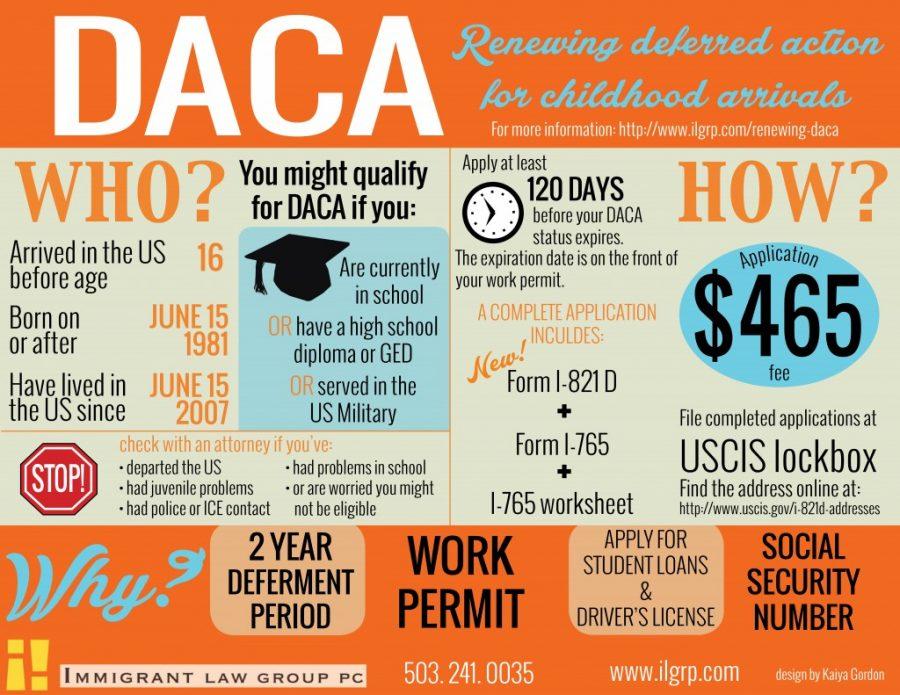What Trump means for DACA
March 14, 2017
There have been a lot of changes since Trump has taken office. Among the executive orders he has been signing are the approval of North Dakota pipeline and the border wall that will be built between the United States and Mexico. Along with the changes that Trump wants to make, there has also been a lot of protest from the people who reside in the US, including Women’s March and multiple marches regarding the ban on immigration from several Muslim countries. All of these changes have really caused fear among many, especially those who are immediately impacted. Trump’s decision regarding DACA has caused a lot of fear within the Latinx youth.
DACA, Deferred Action for Childhood Arrival, is put in place to help undocumented students who have lived in the United States since June 15, 2007. Those who have DACA are also referred to as Dreamers. DACA was put into action in 2012. While DACA isn’t a pathway to citizenship, it does allow the Latinx youth to get an education along with the ability to work legally.
Laura Hernandez (real name withheld) talks about how DACA has impacted her life, “My mom wanted me to have a better education. With DACA I got to gain experiences that I would probably wouldn’t have experienced in the first place.” Hernandez, like many of the Dreamers, didn’t have a say in coming to the United States, but DACA has really benefitted her and others.
When Trump took office, many of the DACA beneficiaries or Dreamers, feared that the program would be taken away and rightly so. Trump has made several strides regarding immigration reform. This may not impact you directly, but it is important to be aware of those that are greatly impacted and what it may mean to them while Trump is in office. There are multiple ways that someone may be affected by Trump’s decision regarding DACA.
One of the requirements is to be at least 15 years old when first applying. Those who have been waiting to turn 15 to apply will no longer be able to because it is not recommended to apply during Trump’s presidency by several organizations. These organizations include immigration lawyers and local churches who help the applicants fill out DACA paperwork. The application is costly, ranging between $400 and $600, and the organizations that help applicants fill them out do not want them to waste money if the program is going to be taken away.
What are alternatives to DACA? The BRIDGE Act, introduced by Senators Dick Durbin and Lindsey Graham, would protect the Dreamers from deportation if put into action. Since the BRIDGE Act isn’t in action, if it is, it will protect nearly 800,000 Dreamers.





